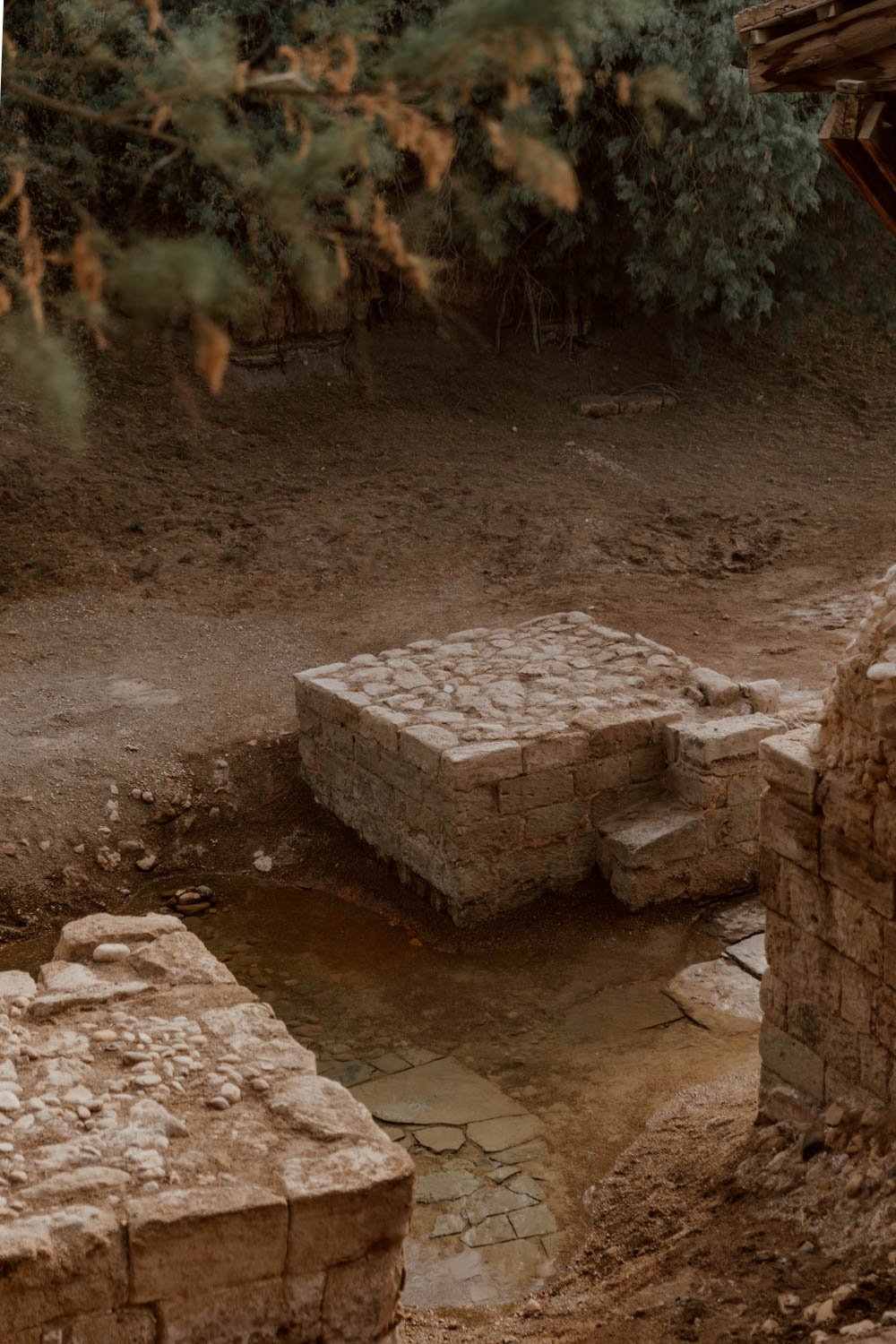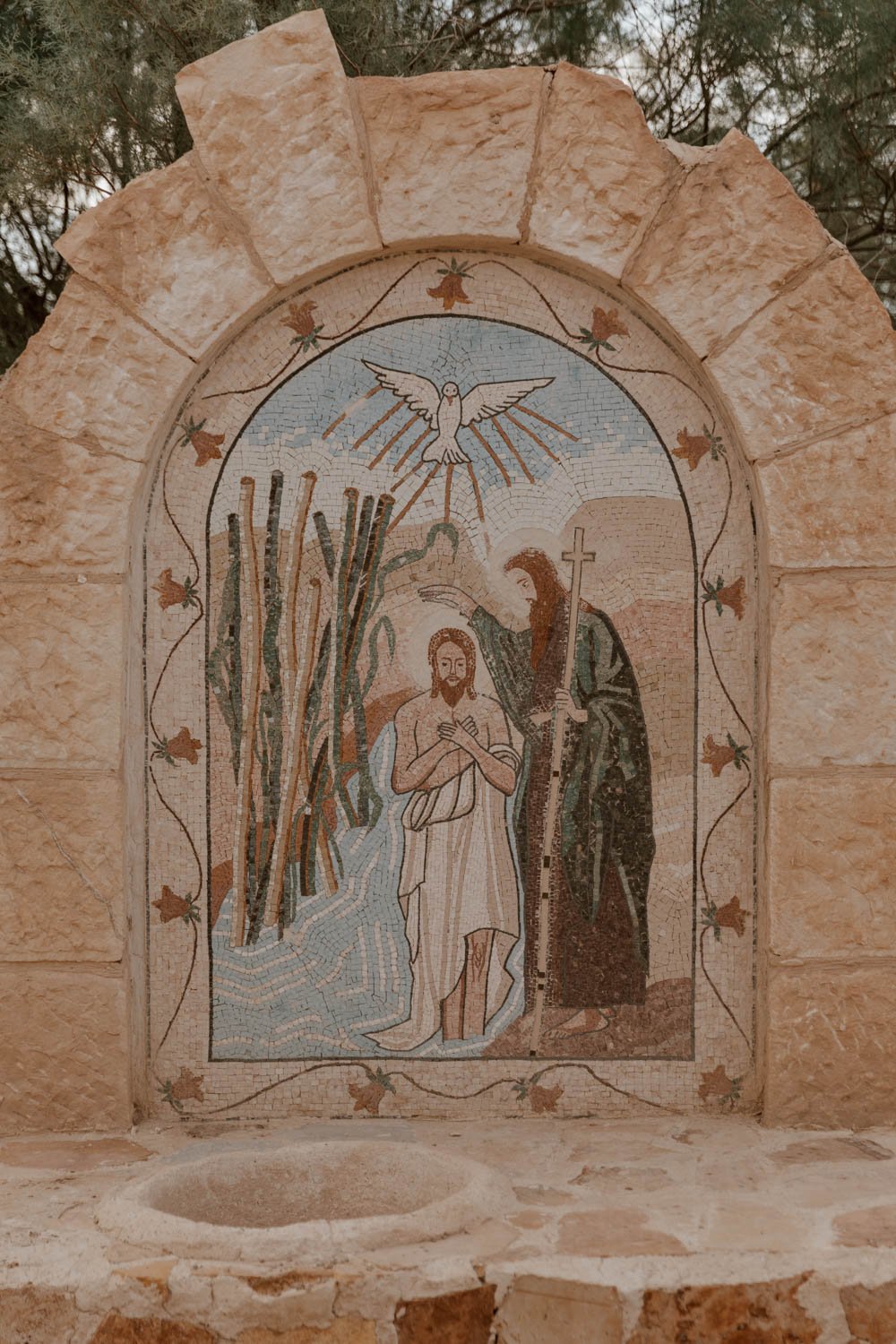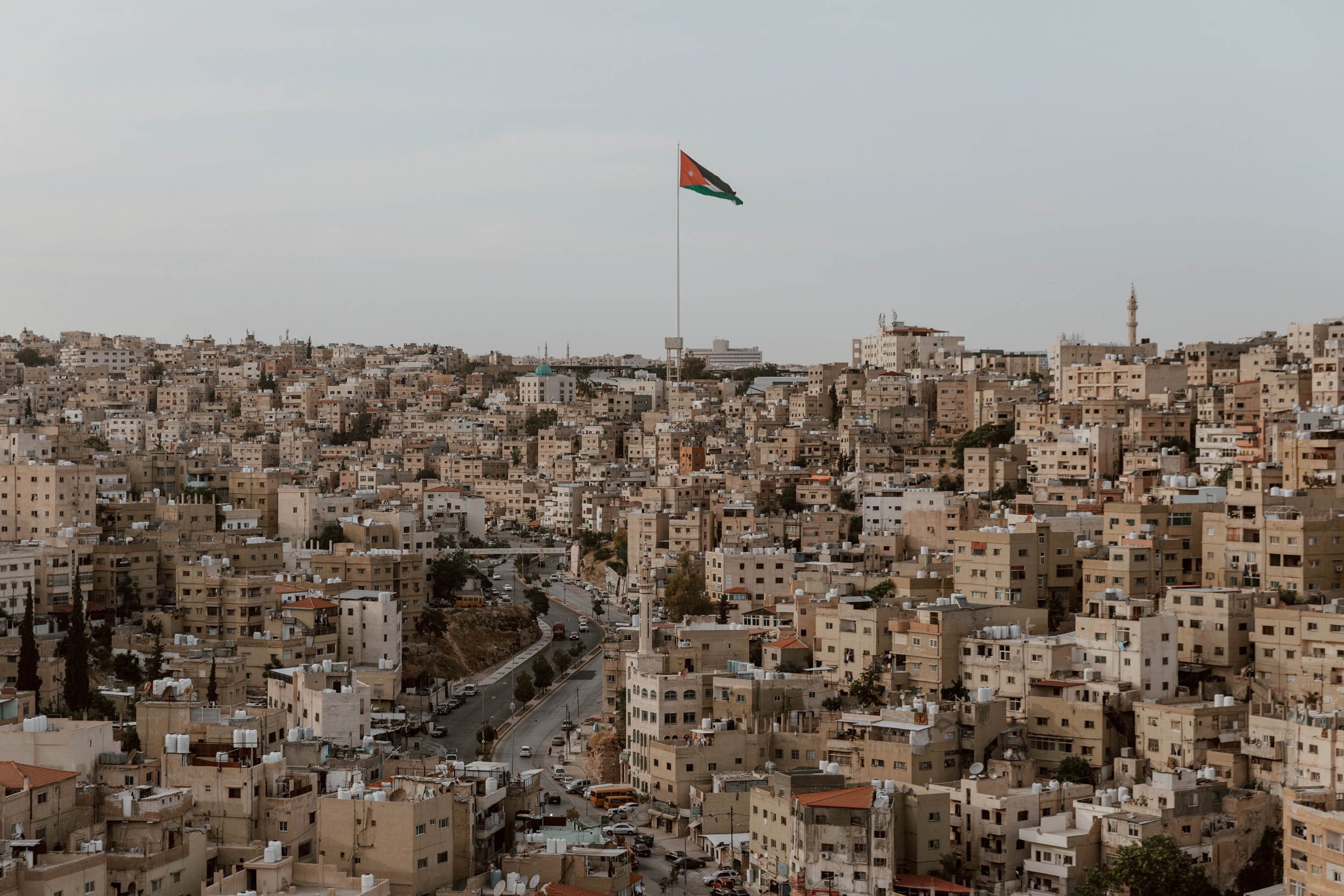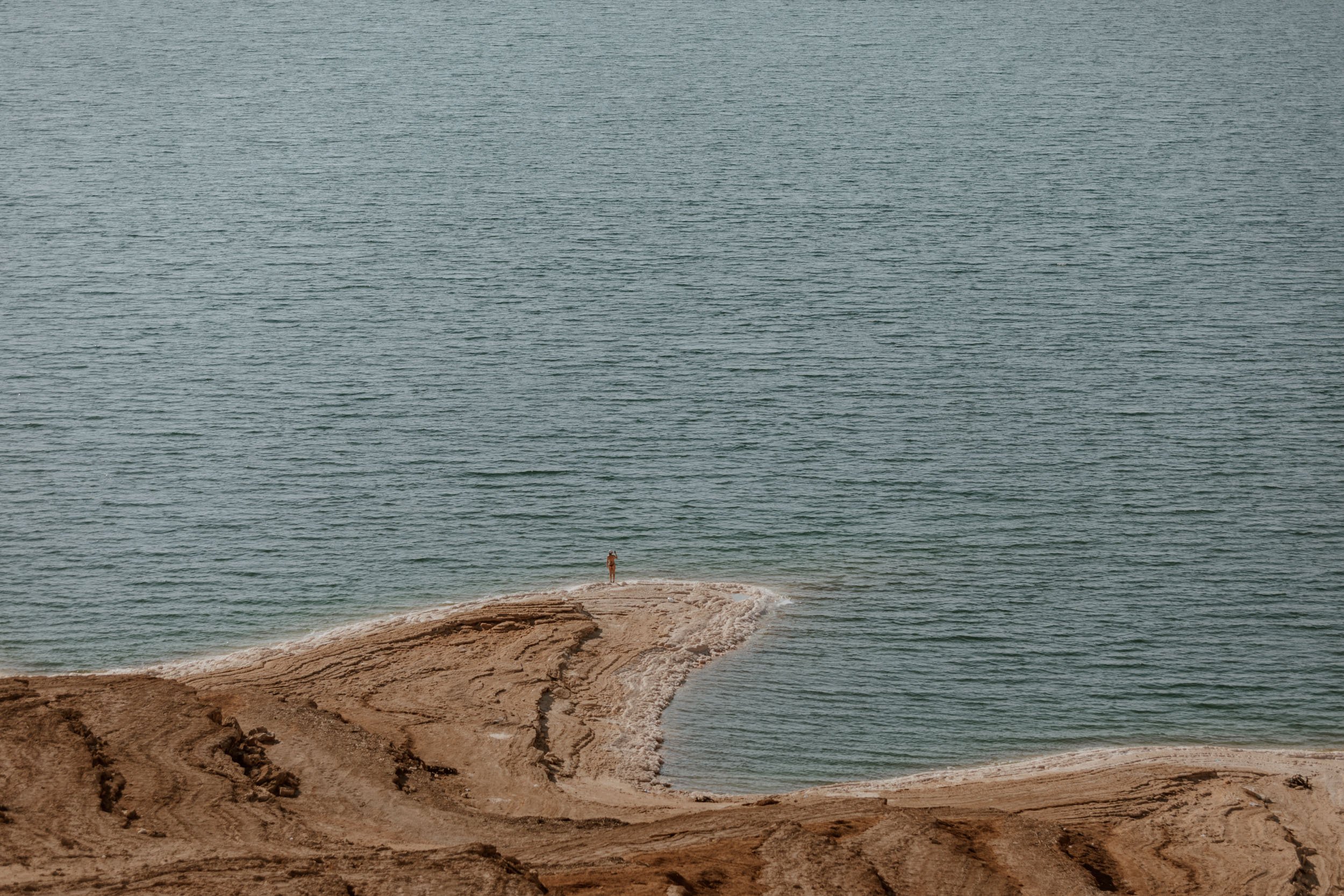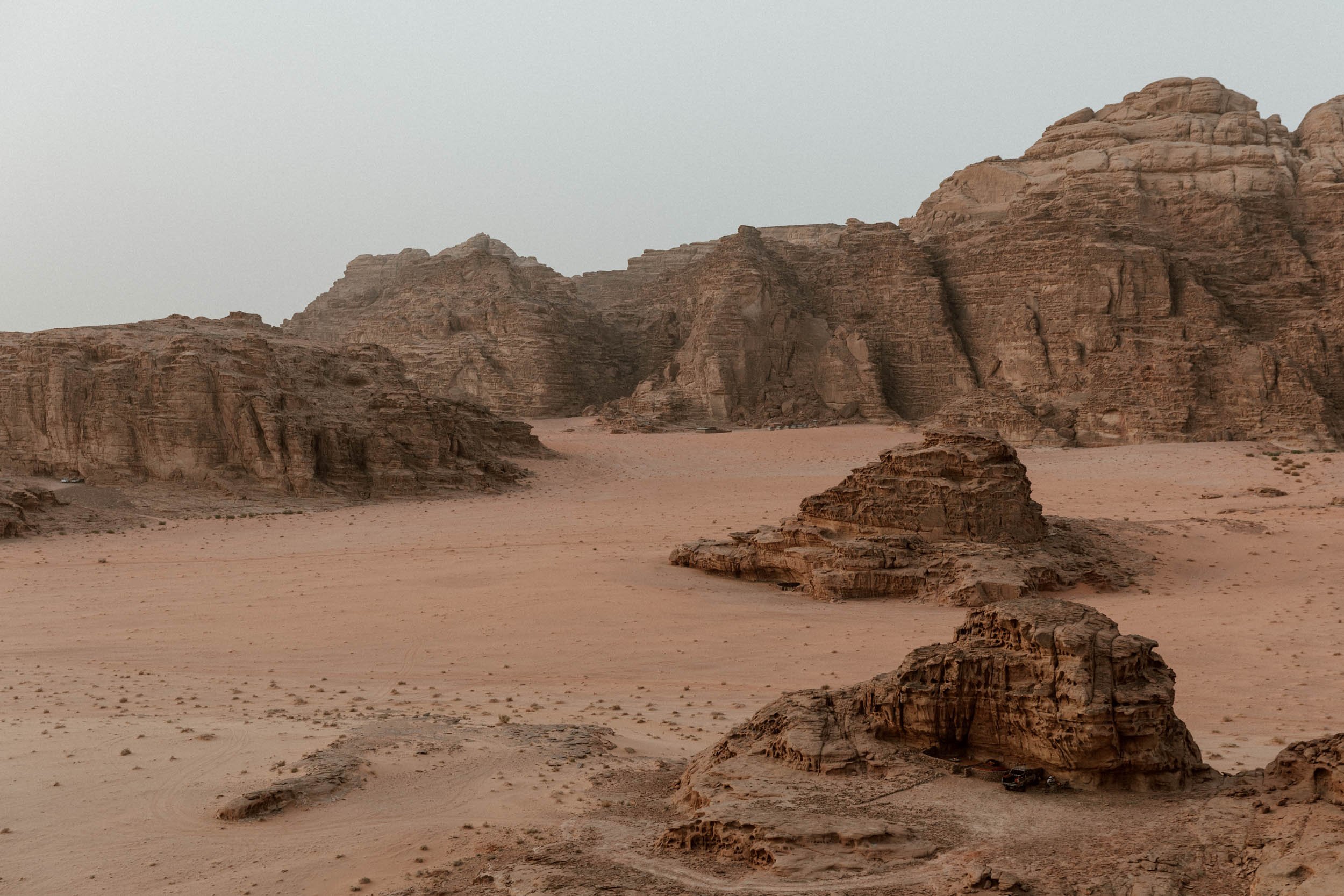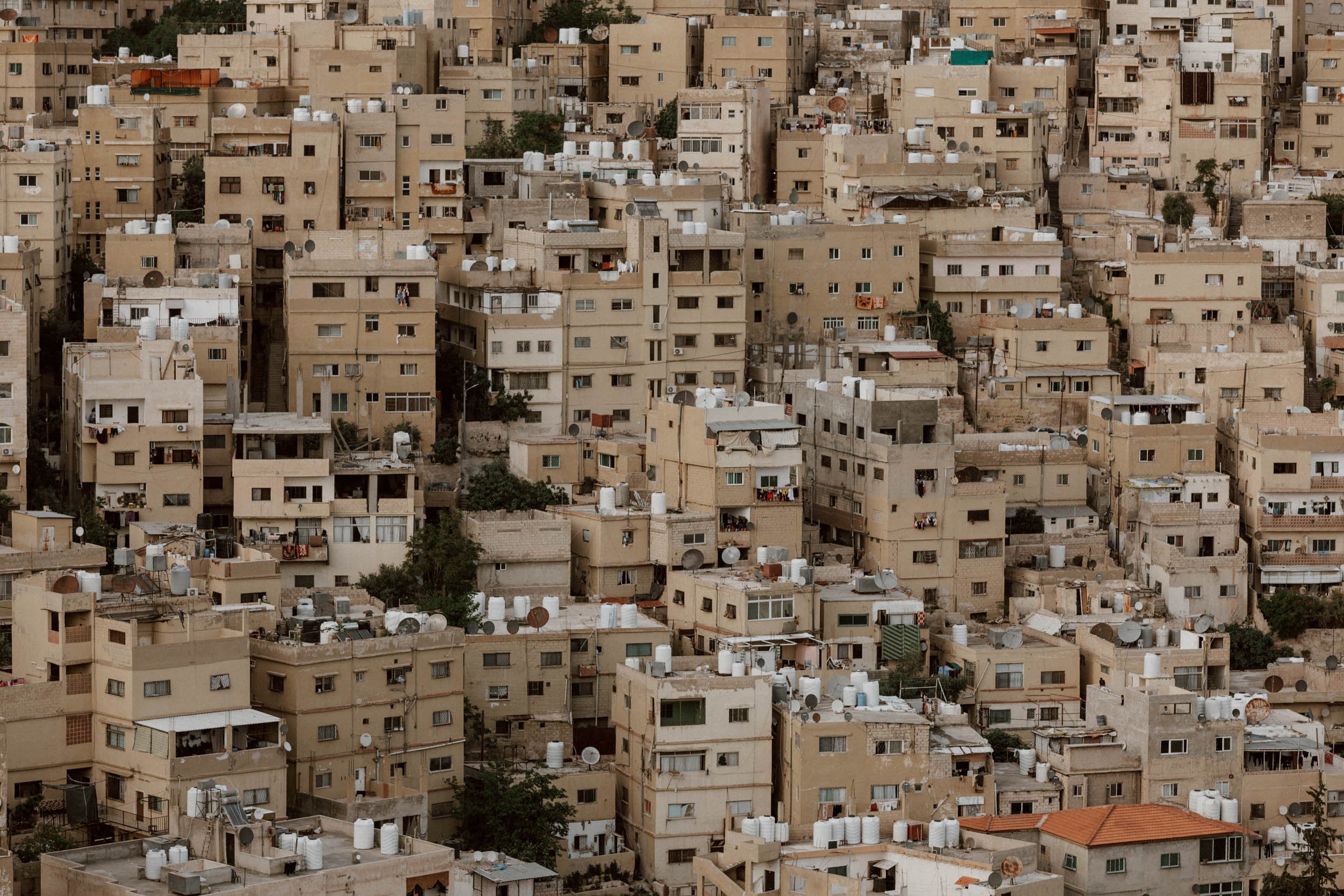In this guide, we’ll cover everything you need to plan your visit to Jesus Christ’s baptismal site in Jordan.
Whilst both technically Christians, baptised years ago as babes in arms and relatively knowledgable on the subject, neither of us are particularly religious.
There’s a residual lingering, and a shared mournful sense that perhaps life would be a little more complete (or easier) with a greater sense of faith or belonging. But faith and religious adherence is something that feels like it should be found, never forced nor faked.
That’s why, upon encountering the very spot where most accept that John the Baptist baptised Jesus and laid the foundations of early Christianity, it was startling how much we were both moved in very different ways on the parched eastern bank of the Jordan River.
Emily in silent tears, Andrew by a bizarre and overwhelming sense of peace.
““These things took place in Bethany across the Jordan, where John was baptising””
Western Jordan, a key part of a wider area known as ‘the Holy Land’, is home to several important religious sites in close proximity; none have faced as uncertain a future as Bethany Beyond the Jordan. It was lost to the history books for centuries and, situated right up against the border of the controversial Israel-occupied West Bank, it was only possible to revive and safeguard it following the seismic 1994 Peace Treaty signed by Jordan and its neighbour.
Since then, it has re-emerged as one of the most important Christian pilgrimage destinations within the Middle East, been visited by Popes and Presidents, and was designated as a UNESCO World Heritage site in 2015.
In this short guide, you’ll find everything you need to know to plan your visit to Bethany Beyond the Jordan including how to get there, tickets (with and without a Jordan Pass), why you need to take a tour and the important sites you’ll visit within the complex.
This is our guide to Bethany Beyond the Jordan, also known as Al-Maghtas.
bethany beyond the jordan
/ Site of Jesus’ baptism by John the Baptist
/ A UNESCO World Heritage site
/ Discounted entry can be added on Jordan Pass
/ Best combined with day trip to Dead Sea or Mt Nebo
/ The guided tour is obligatory
/ Factor in 90-minutes for your visit
How to Get to Bethany Beyond the Jordan
In the west of Jordan, you are best to visit Bethany Beyond The Jordan whilst you’re staying in Madaba, Amman, or by the Dead Sea.
Its proximity to Mount Nebo (another hugely important biblical site 35 minutes away by car) and the Dead Sea (25 minutes away by car), means that Bethany Beyond the Jordan is ideally combined with one or both of the attractions on a single day trip.
For a complete contrast, you could even tag on canyoning in Wadi Mujib at the right time of year.
By Car
The baptismal site is found here, but travellers with a rental car will need to first make their way to the large, free visitor’s carpark (find it here on Google Maps). Situated by the ticket office, you can’t take your car any further than here.
It’s a 20-minute drive from the Dead Sea resorts, 50-minutes / 40km from Madaba, and 1h 15 minutes / 55km from the capital city of Amman.
For advice on renting and road trips, read 17 Things To Know Before Driving in Jordan.
By Bus or Taxi
There is no way to reach the site with public transport, and the closest you can get is five kilometres away at the Al Maghtas junction, on a Suweimah-bound bus from Amman.
So, if you don’t have your own rental car, you will need to source a private taxi or visit as part of an organised tour. Due to the short distances involved, it should be easy enough to get a taxi from the Dead Sea resorts and Madaba, but I’m afraid we don’t have prices available (let us know in the comments!)
Tours from Amman
This half-day private tour from Amman includes transport, your very own guide, plus entrance fees to Bethany Beyond the Jordan so is ideal for those who don’t have a Jordan Pass. Find out more here.
If you’d prefer to combine the site with other popular places nearby, consider joining this highly-rated group tour which includes Madaba, time to relax upon a Dead Sea Beach, alongside Bethany Beyond the Jordan. Find out more here.
Tours from the Dead Sea
This four-hour private tour from the Dead Sea includes hotel pick-up transport, your very own guide, plus entrance fees to Bethany Beyond the Jordan so is ideal for those who don’t include it on their Jordan Pass. Find out more here.
Tours from Madaba
We are unable to source any tours from Madaba that can be booked in advance, but have read that transport-only tours can be booked with hotels there for around 60 JD per person, for a taxi carrying four people (less than four people will likely increase the price).
This often includes the Dead Sea and Mount Nebo as well. If you do this, please share details in the comments below!
Tickets, Times and Obligatory Tours
Tickets to Bethany Beyond the Jordan are not included in the standard Jordan Pass - the money-saving government tourism scheme that bundles admission to several of the most popular places in Jordan into a single ticket. However, when purchasing the Pass in advance of your arrival in Jordan, you can include the site as an add-on at a cost of 8JD.
Alternatively, tickets can be bought in-person at the Bethany Beyond the Jordan ticket office for 12 JD. They have a card machine, but it’s a good idea to also have cash with you.
For more information on the Jordan Pass, read this explainer post: Do You Really Need The Jordan Pass?
Due to the site’s location at the border between Jordan and the Israel-occupied West Bank - and the associated security concerns - all visits here require a guided tour, included in your ticket price.
The tours start at 8.30am, and you’ll see a timetable outside the ticket office. They theoretically start and depart every 30 minutes but, as it is necessary to be ferried over to the baptismal site on a little minibus from the ticket office, it is not uncommon for the staff to wait until they have a full cohort - between 12 to 14 people - before setting off, meaning that tours may only happen once an hour, as happened to us.
Including minibus transport there and back, the tours take around an hour from start to finish, dropping you back off at the ticket office and neighbouring car park.
At time of writing, the last tour of the day is at 3.30pm, but there are additional tours added in summer time at 4pm, 4.30pm, and 5pm. If in doubt, we recommend arriving earlier in the afternoon!
We do unfortunately have to note that the guide that led our tour was fairly disappointing, failing to focus on the religious significance of the site, and treating it more as a fairly bland archeological ruin. His explanations were short and mumbled, he didn’t really welcome any questions, and he also hurried people along quite briskly, giving little to no time for reflection. Perhaps as it was the final tour of the day he was simply keen to go home, but we would have hoped for a lot more from a compulsory tour at a pretty unique place (and 12 JD isn’t cheap for entry).
Indeed, we’d go as far to suggest that those visiting Jordan on a pilgrimage or who are a very devout Christian should consider visiting with a specialist spiritual-focused tour group.
Tip // The ticket office is also where you’ll find toilets and a small kiosk selling snacks and cold drinks (plus a rather large troupe of friendly dogs!)
Things to See at Bethany Beyond the Jordan
The complex covers quite a large, empty area which has been impacted significantly by drought and conflict.
Both banks of the Jordan River - that flows north to south from the Sea of Galilee to the Dead Sea - were closed military zones from 1967, and it was only the signing of the 1994 Israel-Jordan peace treaty which allowed the clearing of landmines so that the remains of churches, caves and baptismal pools were able to be safely unearthed here on the eastern side. This also permitted its development as a tourism - pilgrimage site, despite its proximity to the most disputed territory in the Middle East.
However, the diversion of the Jordan River by Israel, Jordan and Syria for agriculture and industry have reduced its flow by as much as 90%. This means that, through you are on the banks of the Jordan, the water levels over two thousands years ago would have been dramatically higher, and it can be a little challenging to get your head around the difference with today’s dried-up beds and stagnant, shallow waters of a river mentioned over 185 times in the Bible.
This difference may not impact the experience of those here on a pilgrimage, but it may come as a bit of a surprise to those who have little to no spiritual interest.
Etiquette
For non-religious visitors, sceptics, or those of a different faith, it’s incredibly important at all the below and throughout your visit to respect the fact that this is one of the world’s most important Christian pilgrimage sites. Act with the necessary respect for it as you walk around, particularly around those here to pray or for whom it is clearly a special place, don’t be too loud, and remove your hat if entering the church.
Spring of John the Baptist
The Spring of John the Baptist, where Jesus Christ was baptised, is actually quite unremarkable from an archeological point of view, and only identifiable by a set of stone steps leading down to a small, shallow pool of water.
It is however one of the most significant places in the Holy Land.
Using Bible descriptions and accounts from pilgrims spanning the 3-10th centuries, scholars were finally able to identify the area where Jesus was baptised, a claim sanctified with an open-air mass by Pope John Paul II in the year 2000.
This is the point at which our obligatory guide really fell short on his explanation, with no real weight given to the spring’s incredible religious significance. It’s a very peaceful spot and, as we’ve mentioned, surprisingly moving; we’d recommend hanging back from the tour group to give it the reverence it deserves and enjoy a quiet moment at it.
The Churches
Within the same archeological area as the Baptismal Site, you will find the remains of three Byzantine churches, one on top of the other. The first was built between the 5th and 6th century, and rebuilt after being destroyed by flooding.
The ruins require a fair amount of imagination to appreciate, as all that really remains today are basic foundations and traces of the original mosaics. However, they and the other churches you’ll see scattered around, are a testament to how long this place has been revered by Christians, with several built to provide pilgrims with a place to pray.
Orthodox Church
Following on from the church remains, you will continue along a covered wooden walkway towards the Jordan River, encountering on your left an impressive gold-roofed Orthodox Church. You’re allowed to enter, and although its small inside it is ornately decorated with colourful iconography, heavy dark wood panelling and sumptuous gold detailing.
Remember to take your hat off, and give those who are praying some silence and space.
The Jordan River
This is quite a surreal moment.
Accompanied by a heavily armed guard, you will pass through a gate to the edge of the Jordan River; the only place civilians can currently touch the river in the entirety of Jordan.
This is very much an area under high security on both sides, and it’s quite a bizarre setting with military installations and controls each side of the narrow opening by the water, but take a moment to do whatever you feel is appropriate until the guide tells you to pass back through the gate and leave.
If accompanied by a priest, it’s actually possible to be baptised here although it’s more common to see this taking place in the Israeli-run complex of Qasr Al Yahud, across the other side of the river.
We can’t quite recall precisely, but are almost certain no photos or videos could be taken in this area. Either way, it’s wise to respect any rules or instructions issue the Jordanian border force personnel.
Whilst there are other sites within the complex, including the ruined Rhotorios Monastery, the presumed Cave of John, Tell Elias (where Elias is said to have ascended to heaven) and the House of Mary the Egyptian, we were not taken to visit these and are unsure if they are still included within the standard tour - if you visit and do get to see them, please let us know in the comments.
You should factor in about 90 minutes for the whole experience of visiting Bethany Beyond The Jordan, which may be a little more or less depending on your arrival time and the punctuality of the tour departures.
Where to Next?
Do You Really Need The Jordan Pass?
How To Visit + Float in the Dead Sea
13 Wonderful Things To Do In Jordan
A Short Guide to Visiting Mount Nebo
A Complete Guide to Madaba | Jordan’s Mosaic City
11 Wonderful Things to Do in Amman
A Complete Guide to Visiting Petra
A Guide to Canyoning in Wadi Mujib | The Best Adventure in Jordan
The Perfect Jordan Itinerary (published soon)
23 Thing to Know Before You Visit Jordan (published soon)





